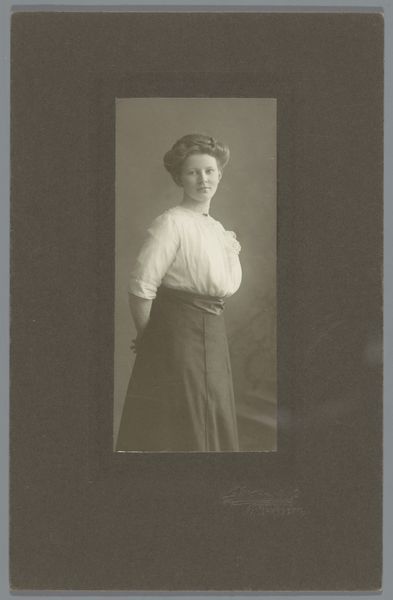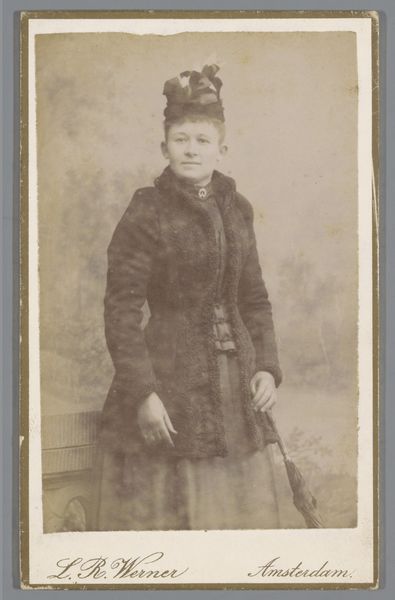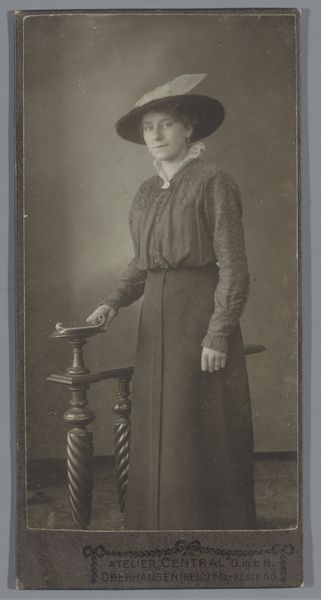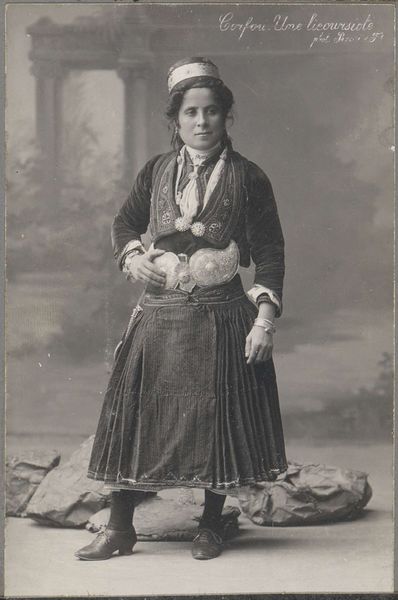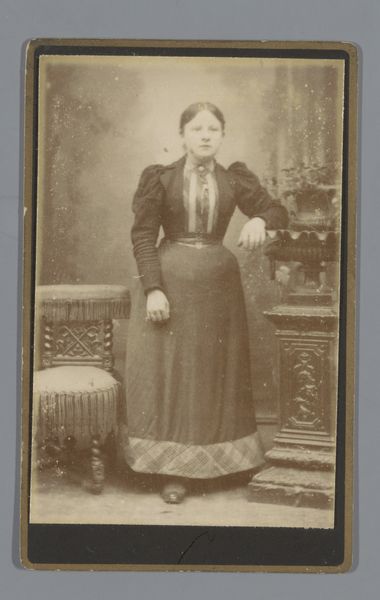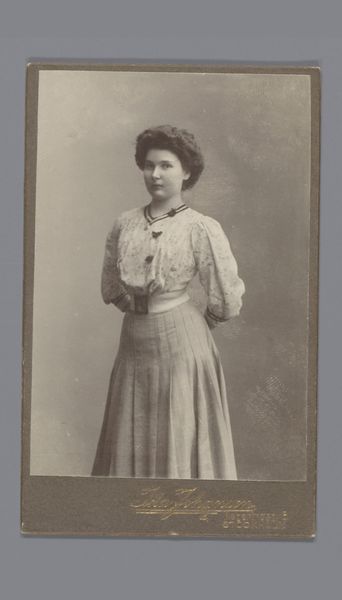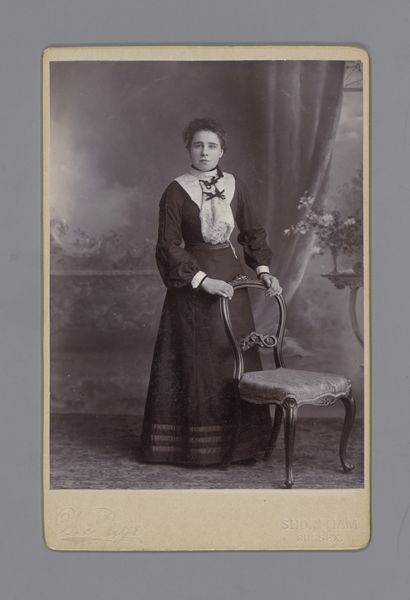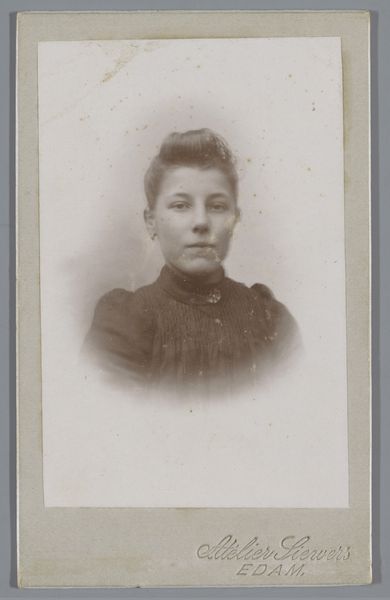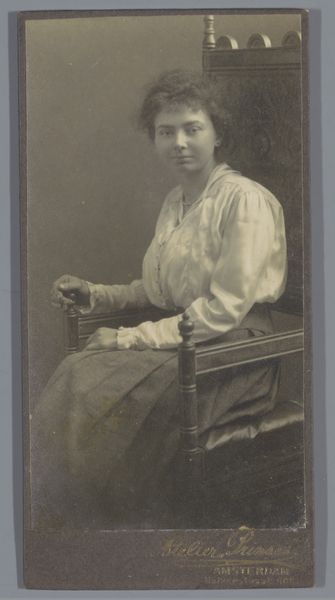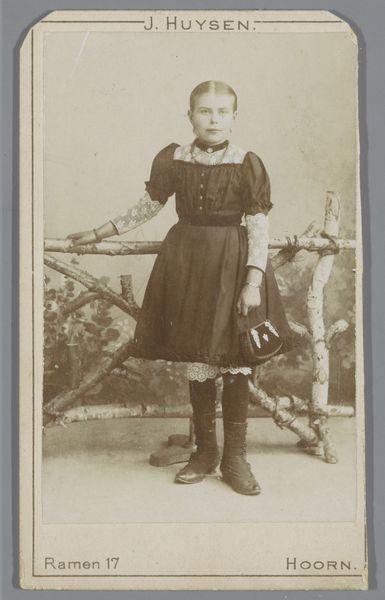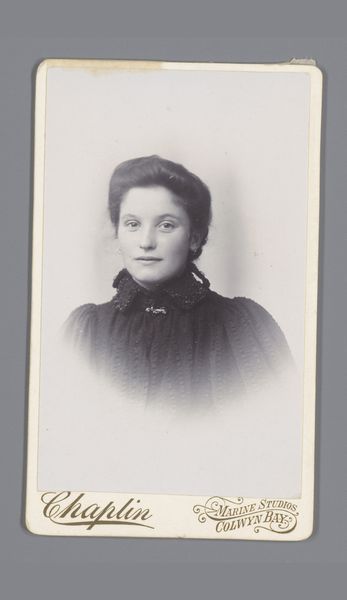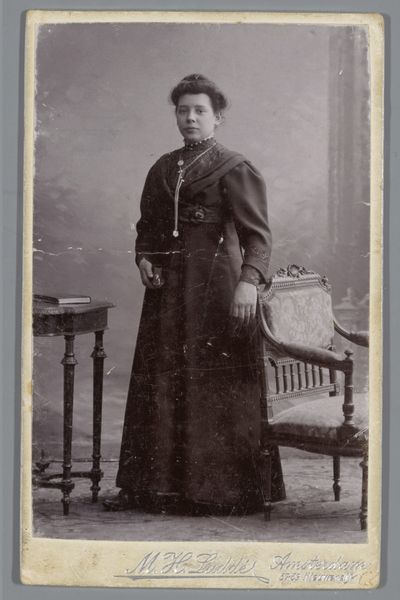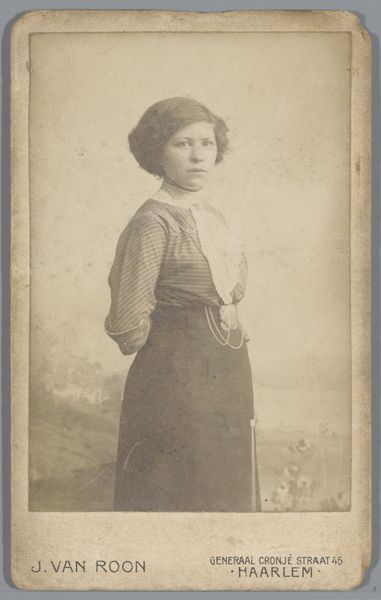
Dimensions: height 104 mm, width 62 mm
Copyright: Rijks Museum: Open Domain
Curator: Standing before us is a photograph titled "Portret van een onbekende vrouw, staande naast een stoel," created by Atelier de Jong sometime between 1900 and 1910. What impressions does it spark for you? Editor: Immediately, it feels like a study in stillness, doesn't it? She’s so deliberately posed; even the chair seems rigid. There’s something about the monochrome and the old gelatin-silver print method that evokes such a specific mood... a contemplative seriousness. Curator: Absolutely. And when we look closely at this gelatin-silver print, think about how its creation required such a meticulous process. We must consider the chemistry involved and the labour of studio assistants developing these images. Every tiny manipulation is preserved here. It is no spontaneous Instagram pic! Editor: Indeed. And considering the fashion, it gives us some good social cues. Look at the details of the blouse – probably hand-sewn, wouldn't you think? The tiny stitches and lacework suggest that clothing may have had a high value back then because people were paying much closer attention to quality craftsmanship... Curator: Definitely, and what strikes me, too, is how the lighting directs us right to her face. There’s a quiet dignity there. You get a sense of a person who has stories untold, bottled inside. It feels intimate and slightly mysterious all at once, as if her innermost secrets were about to be discovered any second. Editor: And of course, there is an explicit business advertisement here in terms of "de Jong’s" location in tiny writing in the bottom right hand corner. Gelatin-silver-print, when introduced as a stable, commercially viable industrial method to replicate photos, had profound social, and economic impacts. Curator: A really great observation; indeed, the way in which photos allowed a much broader cross-section of society to make "art for all," or at least for many! She's a phantom from the past, yet her image lingers. Editor: Yes, it's really that tangible link with labour, time, place and industrial making processes—and an advert—that I love here.
Comments
No comments
Be the first to comment and join the conversation on the ultimate creative platform.
